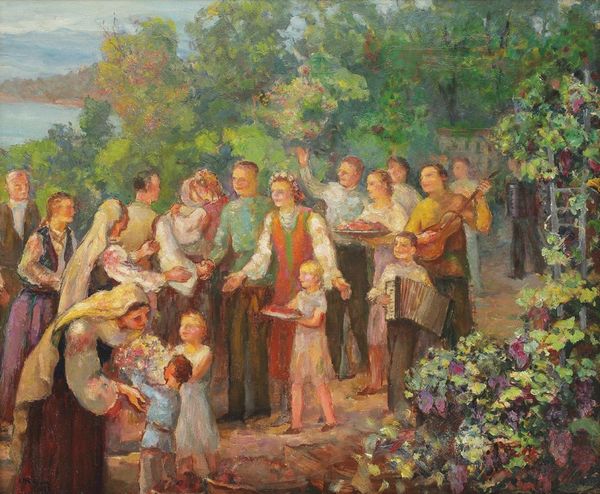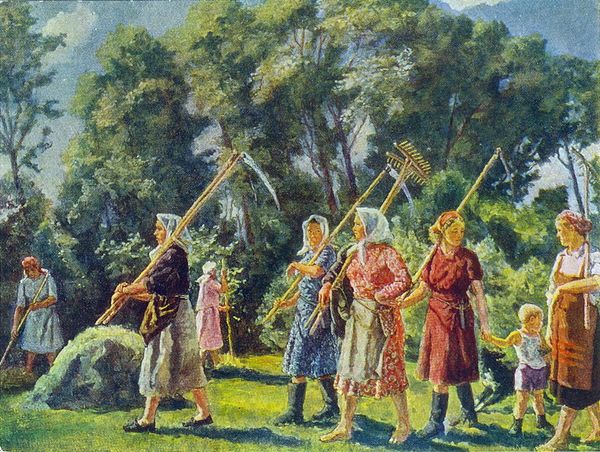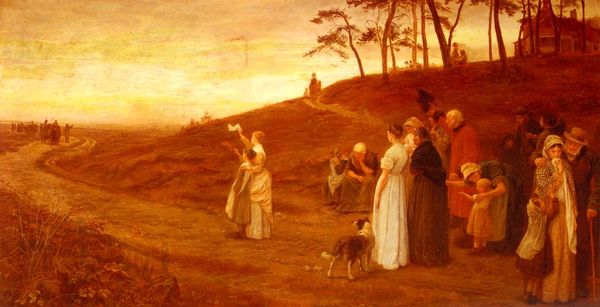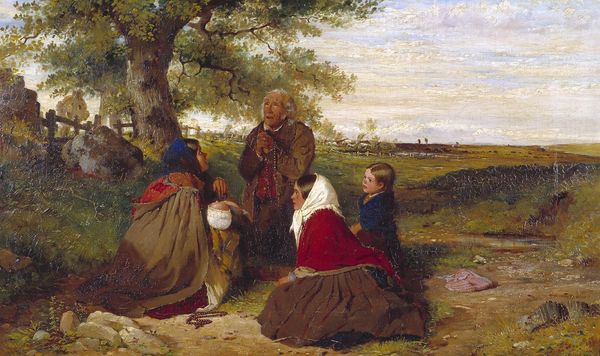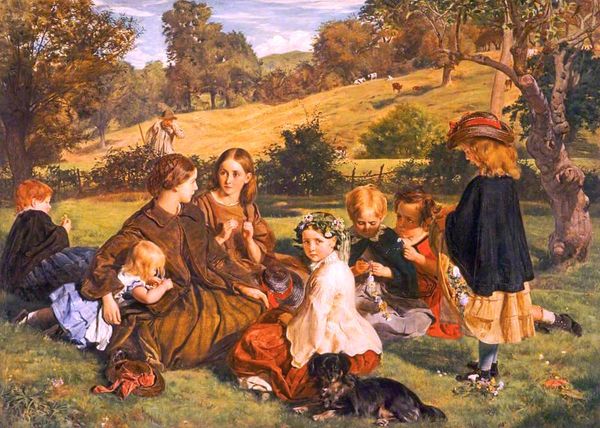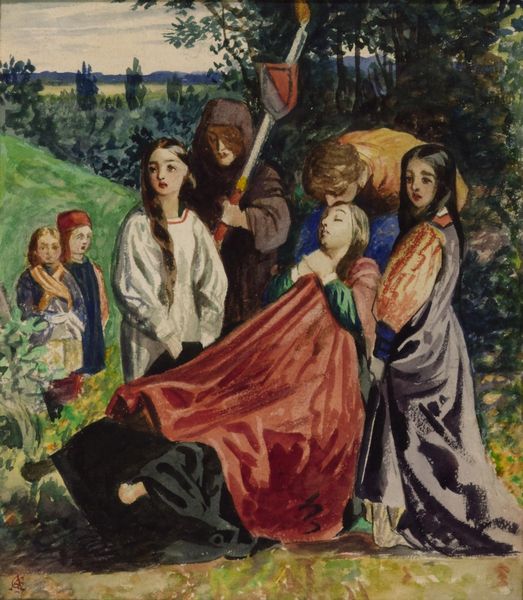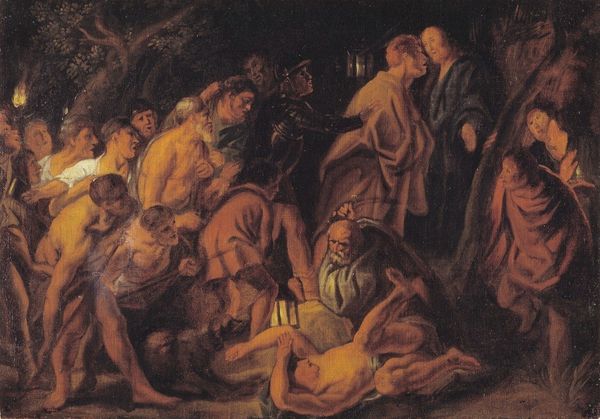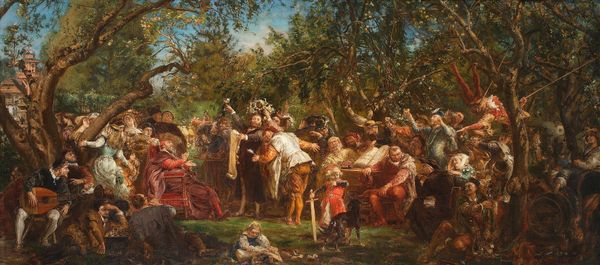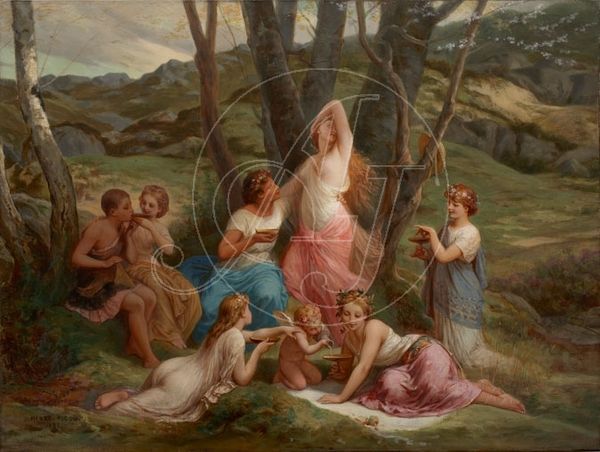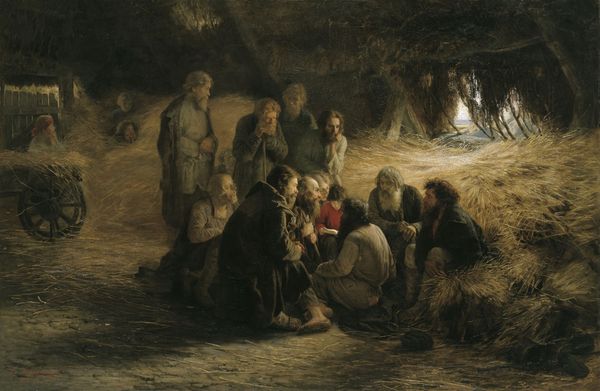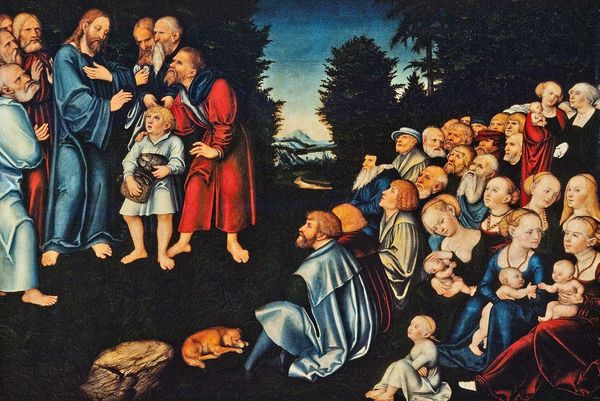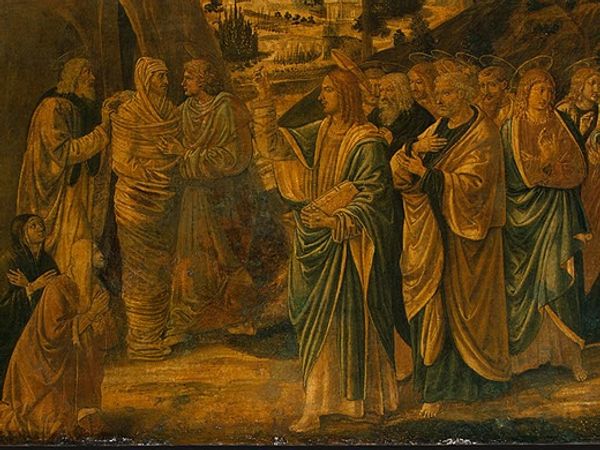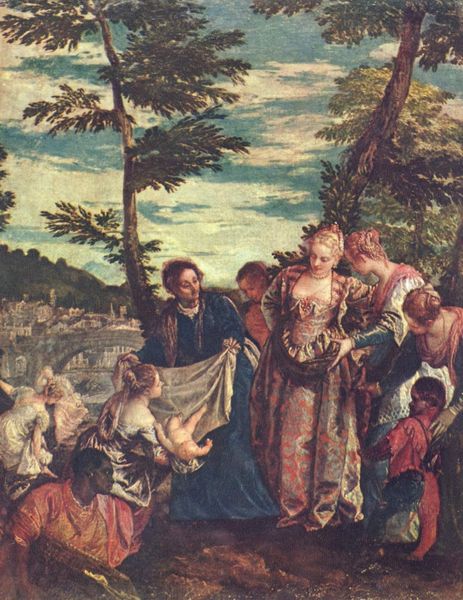
Copyright: Public domain
Eugène Burnand painted this scene with figures dressed in classical garb to depict a scene of invitation to a feast. Notice the gesture of outstretched hands, an open invitation. This act resonates across time, echoing in ancient Roman art where it symbolized welcome, and later, in Christian iconography, divine grace. The emotional weight of this gesture is palpable, drawing us into the scene. Consider how, in medieval depictions of the Annunciation, the Virgin Mary extends her hand in a similar manner, not just receiving, but offering. This motif has been passed down, evolving from an earthly offering to an evocation of divine acceptance. The act is a human constant, a bridge between souls. Our collective memory recognizes the profound significance of extended hands. It’s an archetypal image, engaging the viewer on a subconscious level, inviting us to partake in the shared human experience of welcome and community. This symbolic expression continues its non-linear journey, reappearing, evolving, and acquiring new layers of significance across history.
Comments
No comments
Be the first to comment and join the conversation on the ultimate creative platform.
